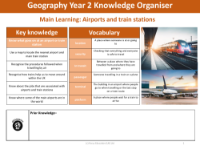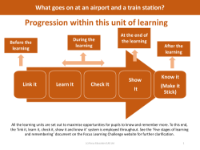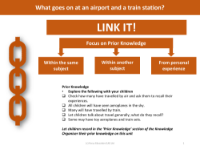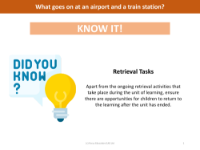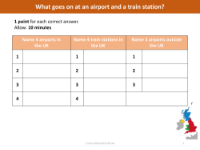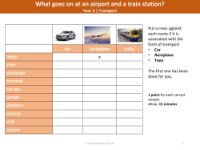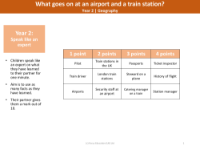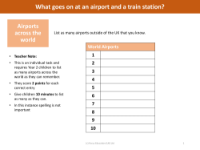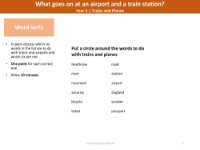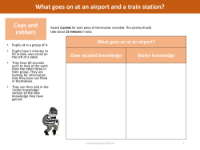Long-term overview - Airports and Train Stations - Year 2
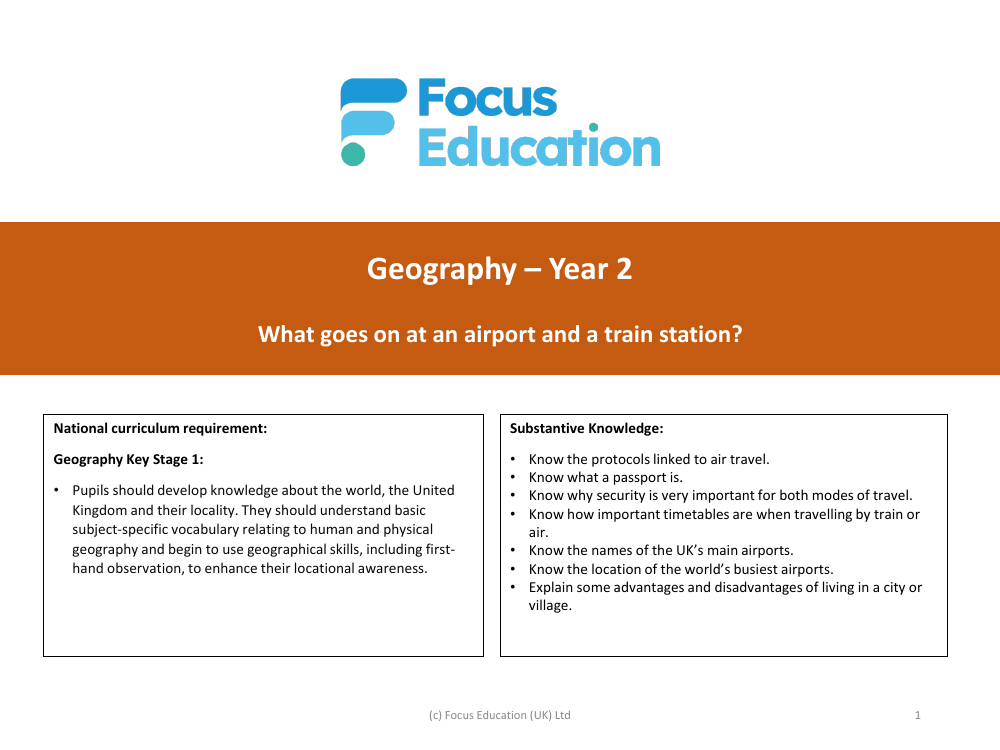
Geography Resource Description
In the Year 2 Geography curriculum, students are encouraged to explore and understand the workings of airports and train stations, which are integral parts of global and local transportation networks. The National Curriculum for Key Stage 1 Geography aims to develop children's knowledge about the world, the United Kingdom, and their own locality, while also introducing them to basic geographical vocabulary and skills. Through hands-on observation and learning, students enhance their awareness of location and begin to grasp the importance of geographical features in their daily lives.
The substantive knowledge component of the curriculum delves into various aspects of travel. Students learn about air travel protocols, the significance of a passport, the critical role of security in travel, and the reliance on timetables for scheduling. They also become familiar with the names and locations of the UK's main airports, as well as some of the world's busiest airports. Additionally, they explore the socio-economic impacts of living in different types of settlements, such as cities and villages. Disciplinary knowledge focuses on practical skills, such as using directional terminology, locating towns and cities on a UK map, differentiating between a world map and a globe, and creating models to represent geographical features. This comprehensive approach ensures that students not only acquire factual knowledge but also develop the skills to apply this knowledge in a variety of contexts.
